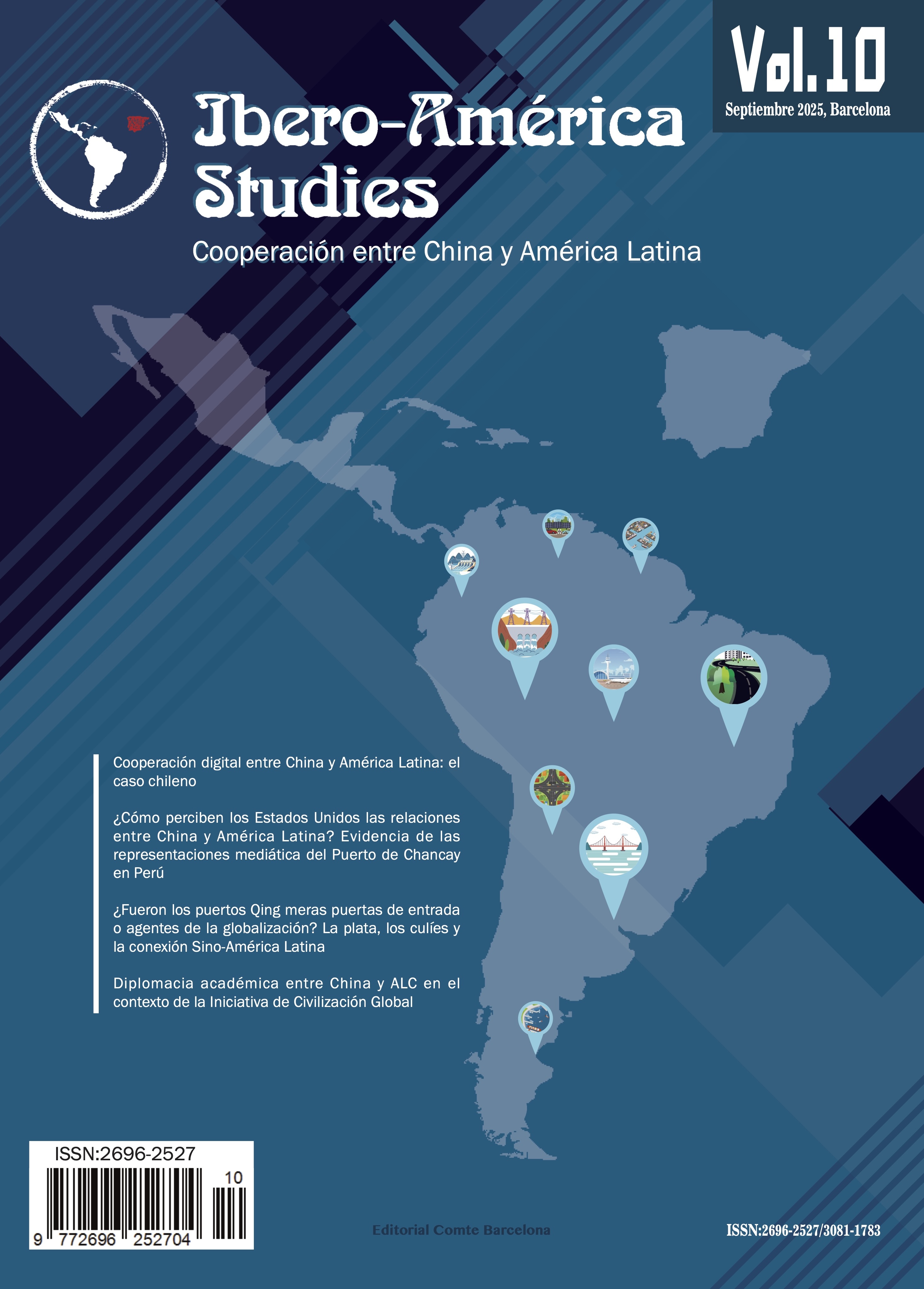Abstract
This article revisits the role of Qing dynasty port cities in early globalization by examining two Sino-Latin American linkages: the influx of Spanish American silver in the late 17th and 18th centuries, and the export of Chinese indentured labourers (“coolies”) in the mid-19th century. Rather than serving merely as passive gateways for trade and migration, the ports of Xiamen and Kulangsu actively shaped these transoceanic exchanges. Through a comparative analysis with other coastal hubs such as Guangzhou and Macao, the study shows how these cities forged a maritime network that extended China’s reach into Latin America. Southern China’s coastal entrepôts integrated overseas silver into local economies and later joined the lucrative yet troubling business of sending Chinese labourers to Cuba and Peru. Although constrained by imperial policies and unequal treaties, officials, merchants, and intermediaries in Fujian negotiated and adapted with a degree of agency to these global transformations. These findings provide an alternative view on the role of Qing ports in globalization, drawing attention to the local actors and conditions that influenced Sino–Latin American exchanges.
References
(Bowring, 1852) Bowring, J. (1852). Despatch to the Earl of Malmesbury on Coolie Emigration from Amoy. London: Foreign Office.
(Brown, 2020) Brown, K. (2020). “The Coolie Trade, 1838–1916: The Migration of Indentured Labor from India and China.” Portuguese Literary & Cultural Studies 33: 29–33.
(Chen, 1991) Chen, X. (1991). “Qingdai qianqi de Xiamen haiguan yu haiwai maoyi (The Xiamen Customs and Overseas Trade in the Early Qing Dynasty).” Xiamen Daxue Xuebao, 3, 113.
(Chen, 2015) Chen, G. (2015). Qingdai zhuxia lingshiguan guojia qianbi jicui (Collection of National Coins of the Consulates in Xiamen during the Qing Dynasty). Xiamen: Lujiang Publishing House.
(Flynn & Giráldez, 1995) Flynn, D. O., & A. Giráldez. (1995). “Born with a ‘Silver Spoon’: The Origin of World Trade in 1571.” Journal of World History 6 (2): 201–221.
(Gao, 2021) Gao, J. (2021). “Chinese Migration to Latin America: From Colonial to Contemporary Era.” History Compass 19 (9): 1–13.
(Ginés-Blasi, 2022) Ginés Blasi, M. (2022). “The ‘Coolie Trade’ via Southeast Asia: Exporting Chinese Indentured Labourers to Cuba through the Spanish Philippines.” In K. Ekama, L. Hellman & M. van Rossum (eds.), Slavery and Bondage in Asia, 1550–1850: Towards a Global History of Coerced Labour. Berlin/Boston: De Gruyter, 97–118.
(Gützlaff, 1833) Gützlaff, K. F. A. (1833). The Journal of Two Voyages along the Coast of China in 1831 and 1832. New York: John P. Haven.
(Hansard, 1872) Hansard. (1872). “Chinese Coolie Traffic.” Hansard Commons Debates, 16 Feb. 1872, vol. 208: pp. 762–771.
(Hansard, 1873) Hansard. (1873). “Chinese Coolie Trade.” Hansard Commons Debates, 23 May 1873, vol. 216: cc 1678–1685.
(Hu-Dehart, 1993) HuDeHart, E. (1993). “Chinese Coolie Labour in Cuba in the Nineteenth Century: Free Labour or Neo Slavery?” Slavery & Abolition 14 (1): 67–86.
(Irick, 1982) Irick, R. L. (1982). Ch’ing Policy toward the Coolie Trade, 1847–1878. Taipei: Chinese Materials Center.
(Jin, 2022) Jin, G. (2022). “Zhongguo da fanchuan” yu “Sichou–Baiyin zhi Lu” — “Parian” yanjiu (The Chinese Galleon and the “Silk–Silver Road”: A Study of the Parián). Macao: Macau Foundation; Guangzhou: Jinan University Macao Research Institute.
(Kani, 1985) Kani, H. (1985). The oversea coolies including female coolies “zhu hua” in modern China. The Qing History Journal 0 (2): 30–37.
(Lin, 2011) Lin, M. (2011). Yinxian: shijiu shiji de shijie yu Zhongguo (China Upside Down: Currency, Society, and Ideologies, 1808–1856). Nanjing: Jiangsu People’s Publishing House.
(Look Lai, 1993) Look Lai, W. (1993). Indentured Labor, Caribbean Sugar: Chinese and Indian Migrants to the British West Indies, 1838–1918. Baltimore: Johns Hopkins University Press.
(Mah, 2016) Mah, L. C. (2016). “Chinese Coolies and the Abolition of the Cuba–Peru Labour Traffic, 1874–1879.” Journal of Global Slavery 1 (2 3): 173–202.
(Meagher, 2008) Meagher, A. J. (2008). The Coolie Trade: The Traffic in Chinese Laborers to Latin America, 1847–1874. Bloomington, IN: Xlibris.
(Ng, 2014) Ng, C. K. (2014). Trade and Society: The Amoy Network on the China Coast, 1683–1735. Singapore: National University of Singapore Press.
(Ollé, 2002) Ollé, M. (2002). La empresa de China: De la Armada Invencible al Galeón de Manila. Barcelona: Acantilado.
(Ong, 2021) Ong, S. K. (2021). Coming Home to a Foreign Country: Xiamen and Returned Overseas Chinese, 1843–1938. Ithaca, NY: East Asia Program, Cornell University.
(Peng, 2007) Peng, X. (2007). Zhongguo Huobi Shi (History of Chinese Currency). Shanghai: Shanghai People’s Publishing House.
(Roopnarine, 2018) Roopnarine, L. (2018). “Chinese Indentured Servitude in the Atlantic World.” In T. Burnard (ed.), Oxford Bibliographies in Atlantic History. New York: Oxford University Press.
(Steere, 1874) Steere, J. B. (1874). “Statement on Chinese Coolies in Peru.” In Dispatch No. 12 of David H. Bailey, Lima, 20 May 1873, Foreign Relations of the United States, 1873, vol. I, 206–209. Washington: Government Printing Office.
(Stewart, 1951) Stewart, W. (1951). Chinese Bondage in Peru, 1849–1874. Durham: Duke University Press.
(Von Glahn, 2020) Von Glahn, R. (2020). “The Changing Significance of Latin American Silver in the Chinese Economy, 16th–19th Centuries.” Journal of Iberian and Latin American Economic History 37 (3): 353–385.
(Wan, 2022) Wan, M. (2022). Mingdai Zhongguo Baiyin Huobihua Yanjiu (Research on the Monetization of Silver in Ming Dynasty China). Shanghai: Shanghai Renmin Chubanshe.
(Wu, 1988) Wu, F. (1988). Qiyue Huagong Shi (History of Contracted Chinese Labourers). Nanchang: Jiangxi Renmin Chubanshe.
(Xiamen Chorography Compilation Committee, 1996) Xiamen Chorography Compilation Committee. (1996). Xiamen Zhi (Gazetteer of Xiamen). Xiamen: Lujiang Publishing House.
(Yen, 1985) Yen, C. h. (1985). Coolies and Mandarins: China’s Protection of Overseas Chinese during the Late Ch’ing Period (1851–1911). Singapore: Singapore University Press.
(Zhou, 2020) Zhou, M. (2020). “Impacto cultural de los reales españoles en el sur de Fujian.” Quiroga: Revista de Patrimonio Iberoamericano 17: 106–110.

This work is licensed under a Creative Commons Attribution-NonCommercial 4.0 International License.


